- Mulch with Straw
- Use Row Covers
- Plant in Fall
- Use Raised Beds
- Install Fencing
- Apply Organic Fertilizers
- Water Regularly
- Avoid Overcrowding
- “Question-Answer”
- What are some effective ways to prevent cabbage seedlings from being uprooted?
- How can I protect my cabbage seedlings from rodents?
- How often should I inspect my cabbage seedlings for pests?
- Can I use chemical pesticides to prevent cabbage seedlings from being uprooted?
- How can I keep insects away from my cabbage seedlings?
- “Video” How To Grow Cauliflower To Fast Harvesting in 45 Days – Awesome Cauliflower Cultivation Technology
Whether you are an experienced grower or just starting out with your cabbage seedlings, one of the challenges you may face is preventing them from being uprooted. From pests to weather conditions, there are several factors that can threaten the stability of your cabbage plants. However, by implementing a few effective strategies, you can significantly reduce the risk of your seedlings being uprooted and ensure a successful growth.
1. Choose the right planting location: Select a spot in your garden that offers protection from strong winds and receives ample sunlight. Avoid areas where water tends to accumulate, as excess moisture can loosen the soil and make seedlings more prone to uprooting.
2. Prep the soil: Before planting your cabbage seedlings, make sure to properly prepare the soil. This includes removing any weeds or debris, improving drainage if necessary, and adding organic matter to enhance soil structure and nutrients levels.
“By providing a suitable soil environment for your cabbage seedlings, you can help promote strong root development and reduce the risk of uprooting.”
3. Use mulch: Apply a layer of organic mulch around your seedlings to help retain moisture and regulate soil temperatures. Mulch also acts as a protective barrier, preventing strong winds or heavy rainfall from dislodging your cabbage plants.
4. Stake your plants: For taller cabbage varieties or if you live in an area prone to high winds, consider staking your plants for added stability. Use sturdy stakes or trellises and secure them firmly in the ground.
5. Install a protective barrier: Create a physical barrier around your cabbage seedlings to keep them safe from pests, animals, or curious children. Options include garden fencing, chicken wire, or even repurposed materials like old window screens.
Mulch with Straw
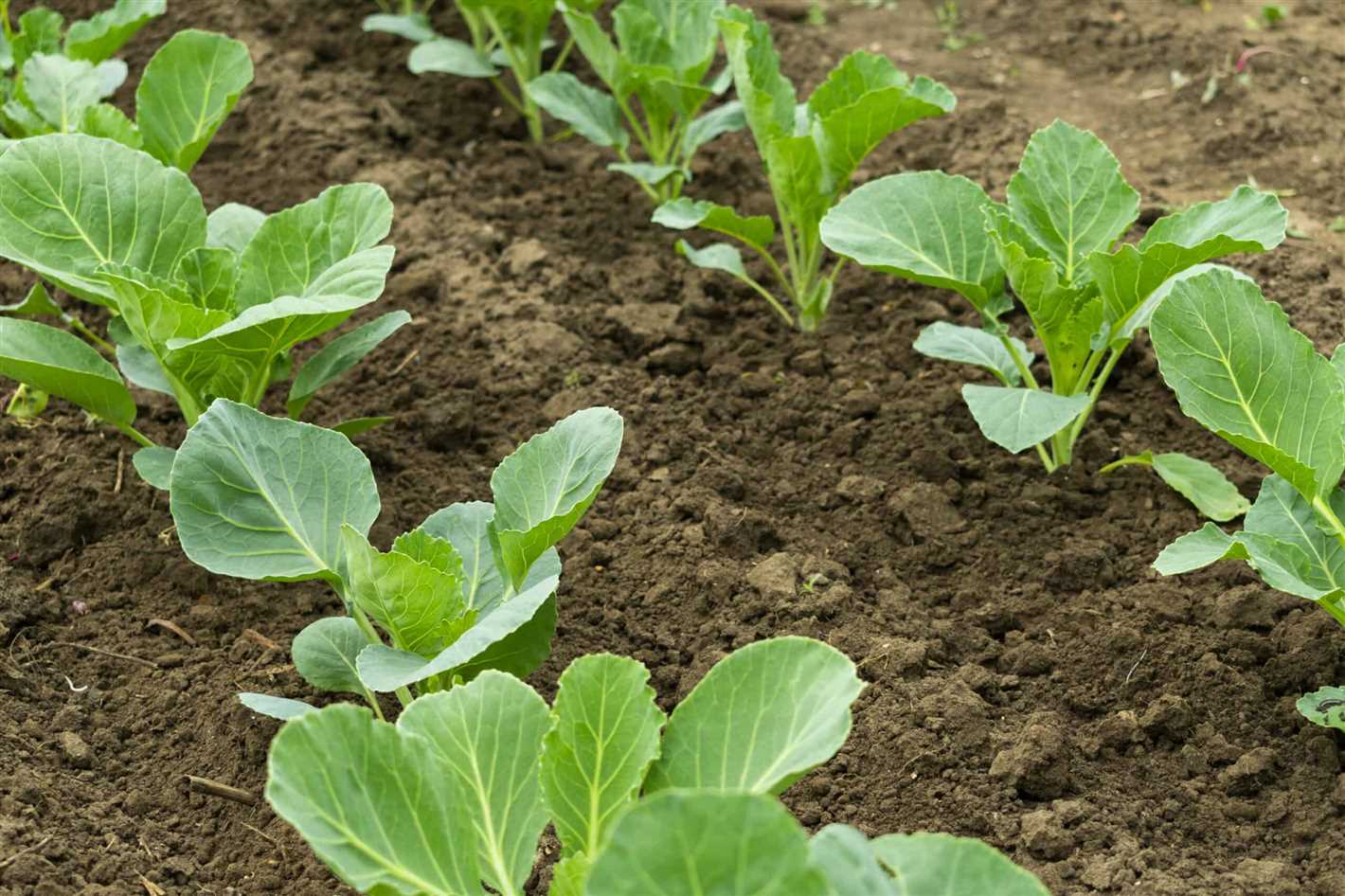
Mulching with straw is another effective way to prevent cabbage seedlings from being uprooted. Straw serves as a protective layer around the seedlings, creating a barrier against external factors that may cause damage.
To mulch with straw, follow these steps:
- After planting the cabbage seedlings, spread a layer of straw around each plant.
- Make sure the layer of straw is at least 2-3 inches thick to provide adequate protection.
- Avoid packing the straw tightly around the seedlings, as this can hinder water and nutrient absorption.
- Leave a small space around the stem of each seedling to allow for air circulation.
Mulching with straw has several benefits:
- It helps retain moisture in the soil, reducing the need for frequent watering.
- Straw mulch acts as an insulator, protecting the roots from extreme temperatures.
- It prevents weed growth, reducing competition for nutrients and moisture.
- Straw decomposes over time, enriching the soil with organic matter.
Remember to regularly monitor the straw mulch and replenish it as needed. It may break down over time, so adding fresh straw will ensure continuous protection for the cabbage seedlings.
Use Row Covers
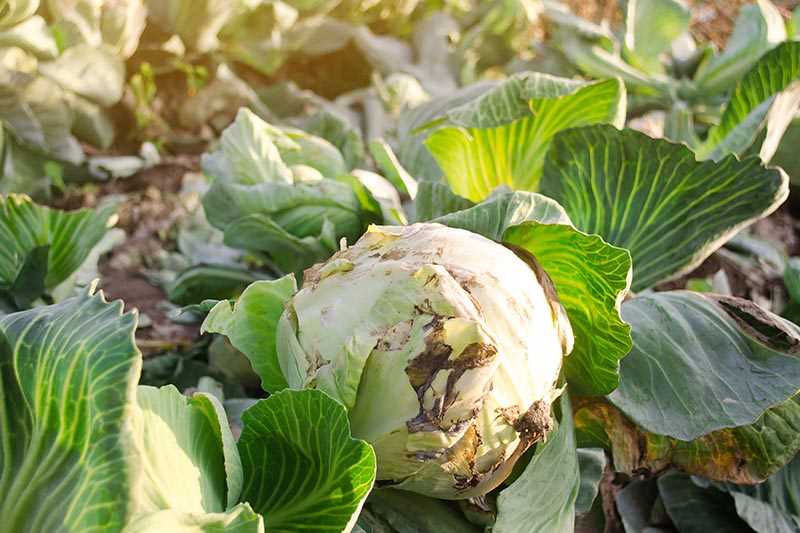
One effective way to prevent cabbage seedlings from being uprooted is to use row covers. Row covers are lightweight fabrics that can be spread over the plants to create a physical barrier between the seedlings and potential threats.
Row covers come in different materials, such as floating row covers made of spunbonded polyester or polypropylene, or hoops covered with insect netting. These covers provide protection from pests like birds, rabbits, and insects that may try to uproot the seedlings.
When using row covers, it is important to properly secure them to prevent any gaps or openings that pests can squeeze through. You can secure the row covers by burying the edges in the soil or by using stakes or clips to hold them in place.
It is also essential to monitor the row covers regularly. Check for any damage or tears that may have occurred and repair or replace them as needed. Make sure to remove the row covers once the seedlings have grown enough and are strong enough to withstand potential threats.
Using row covers not only helps prevent the cabbage seedlings from being uprooted but also provides other benefits. They can create a microclimate for the plants, protecting them from extreme weather conditions, such as frost or excessive heat. Row covers also act as a barrier against pests, preventing the need for pesticides.
Overall, using row covers is a simple yet effective way to protect cabbage seedlings from being uprooted, ensuring their successful growth and development.
Plant in Fall
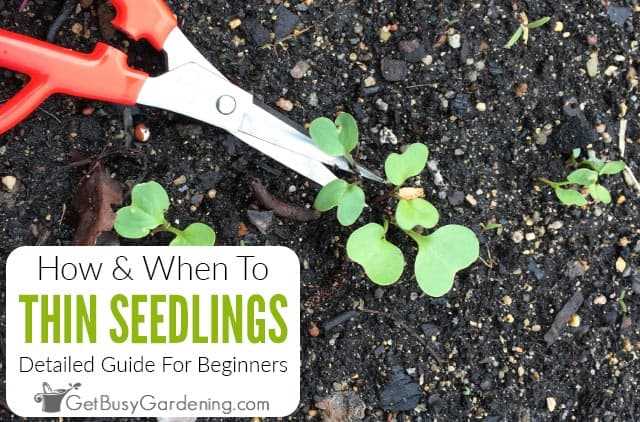
Planting cabbage seedlings in the fall can help prevent them from being uprooted. Fall planting has several advantages when it comes to the survival and growth of young cabbage plants.
1. Cooler temperatures: Fall weather tends to be cooler, which can help reduce the risk of cabbage seedlings becoming stressed or damaged.
2. Moisture availability: In the fall, soil moisture levels are typically higher, providing better conditions for seedling establishment and growth.
3. Less competition: By planting in the fall, your cabbage seedlings will face less competition from weeds and other plants, allowing them to establish themselves more easily.
4. Reduced pest pressure: Many pests that can damage cabbage plants are less active in the fall, leading to a lower risk of infestation.
5. Longer growing season: Fall planting can give your cabbage seedlings a longer growing season, allowing them to develop stronger roots and a more robust structure before winter sets in.
6. Overwintering: Some cabbage varieties are capable of overwintering, which means they can survive the winter and continue growing in the spring. Fall planting provides the best conditions for successful overwintering.
7. Crop rotation: Planting cabbage in the fall can also help with crop rotation, as it allows you to alternate cabbage with other vegetables in your garden bed.
8. Earlier harvest: By planting in the fall, you can expect an earlier harvest in the spring, giving you access to fresh cabbage earlier in the year.
9. Disease prevention: Fall planting can help reduce the risk of certain diseases that are more prevalent in the spring and summer, as the cooler temperatures and lower moisture levels create a less favorable environment for disease development.
10. Improved yield: Overall, planting cabbage seedlings in the fall can improve the yield of your crop, as the plants have more time to establish themselves before facing winter conditions.
Consider planting your cabbage seedlings in the fall to give them the best chance of survival and maximize your harvest.
Use Raised Beds
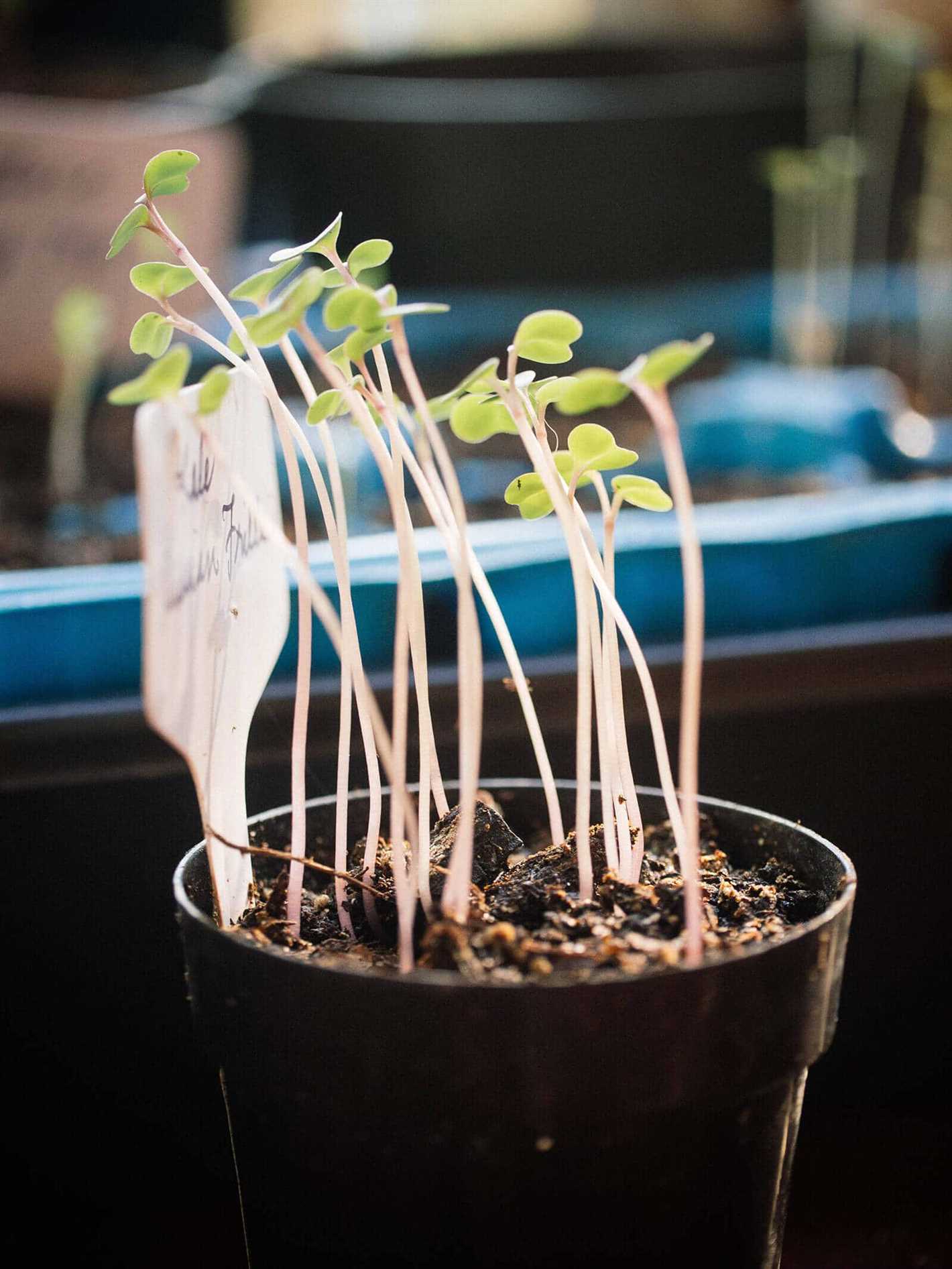
Growing cabbage seedlings in raised beds can help prevent them from being uprooted. Raised beds provide a barrier between the seedlings and external forces that can uproot them, such as strong winds or heavy rainfall. The elevated beds also make it easier to control the soil quality, drainage, and pests.
To use raised beds for cabbage seedlings, follow these steps:
- Select a location for the raised beds that receives full sun and has well-drained soil.
- Clean the area of any weeds or debris.
- Outline the shape and size of the raised beds using stakes and strings.
- Prepare the soil by removing any large rocks or roots and loosening it with a garden fork or tiller.
- Add organic matter such as compost, aged manure, or shredded leaves to improve the soil fertility and structure.
- Level the soil and smooth the surface of the raised beds.
- Build the sides of the raised beds using materials such as wood, bricks, or concrete blocks.
- Make sure the height of the raised beds is at least 8-12 inches to provide enough depth for the cabbage seedlings’ root system.
- Fill the raised beds with a high-quality potting mix or a mixture of topsoil and compost.
- Plant the cabbage seedlings in the raised beds, making sure to space them according to the recommended spacing for the variety.
Using raised beds for growing cabbage seedlings not only helps protect them from being uprooted but also improves the overall health and productivity of the plants. It provides better drainage, reduces weed competition, and makes it easier to monitor and control pests and diseases. Consider using raised beds to give your cabbage seedlings the best possible start.
Install Fencing
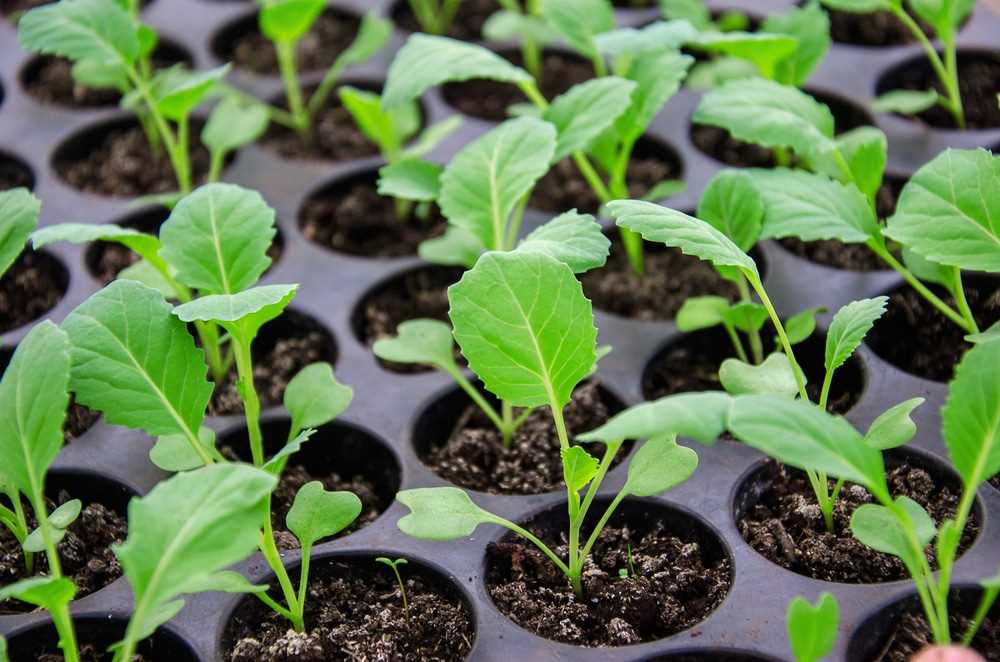
One effective way to prevent cabbage seedlings from being uprooted is by installing fencing around the garden or planting area. Fencing can serve as a physical barrier that deter animals or pests from accessing the seedlings and causing damage.
Here are some steps to take when installing fencing:
- Determine the right type of fencing: Depending on the specific pests in your area, you’ll need to choose the appropriate type of fencing. For example, if you’re dealing with small animals like rabbits, a small mesh or chicken wire fencing may be sufficient. If larger animals like deer are a concern, taller and sturdier fencing may be required.
- Measure and mark the area: Determine the perimeter of your garden or planting area and mark it accordingly. This will help you determine how much fencing material you will need.
- Prepare the area: Clear any vegetation or debris from the perimeter of the area where the fencing will be installed. This will help ensure a smooth installation process.
- Install the fence posts: Dig holes for the fence posts along the perimeter, spacing them according to the manufacturer’s guidelines. Place the posts in the holes and secure them with concrete or soil.
- Attach the fencing material: Unroll the fencing material along the perimeter, making sure it is taut and secure. Use zip ties or fencing staples to attach the material to the fence posts.
- Add a gate: If you need access to the garden or planting area, install a gate along one side of the fencing. Ensure the gate is securely attached and can be opened and closed easily.
Once the fencing is installed, regularly inspect it for any damage or gaps that pests could exploit. Repair any issues promptly to maintain the effectiveness of the fencing as a barrier. Additionally, consider adding additional deterrents such as scarecrows or motion-activated sprinklers to further discourage animals from approaching the seedlings.
Apply Organic Fertilizers
Organic fertilizers play a crucial role in promoting the healthy growth and development of cabbage seedlings. They provide essential nutrients to the plants and improve the soil fertility, resulting in stronger and more resistant seedlings. Here are some effective ways to apply organic fertilizers:
- Compost: Incorporate well-rotted compost into the soil before planting the cabbage seedlings. Compost adds organic matter and nutrients, improving the soil structure and fertility.
- Manure: Use well-aged manure from herbivorous animals, such as cows, horses, or rabbits. Mix the manure into the soil or apply it as a top dressing around the base of the seedlings. Manure provides a rich source of nutrients and enhances the soil’s ability to retain moisture.
- Bone meal: Sprinkle bone meal around the cabbage seedlings, focusing on the root zone. Bone meal is a slow-release fertilizer rich in phosphorus, which is essential for root development and overall plant growth.
- Seaweed extract: Dilute seaweed extract in water according to the manufacturer’s instructions and use it to water the cabbage seedlings. Seaweed extract contains micronutrients, growth hormones, and amino acids that stimulate root growth and strengthen the plants.
- Fish emulsion: Mix fish emulsion with water and apply it to the cabbage seedlings. Fish emulsion provides a balanced combination of nutrients, including nitrogen, phosphorus, and potassium, promoting healthy leaf and stem development.
When applying organic fertilizers, it’s important to follow the recommended application rates to avoid over-fertilization, which can damage the seedlings. Additionally, always water the plants after applying fertilizers to ensure proper nutrient absorption.
Water Regularly
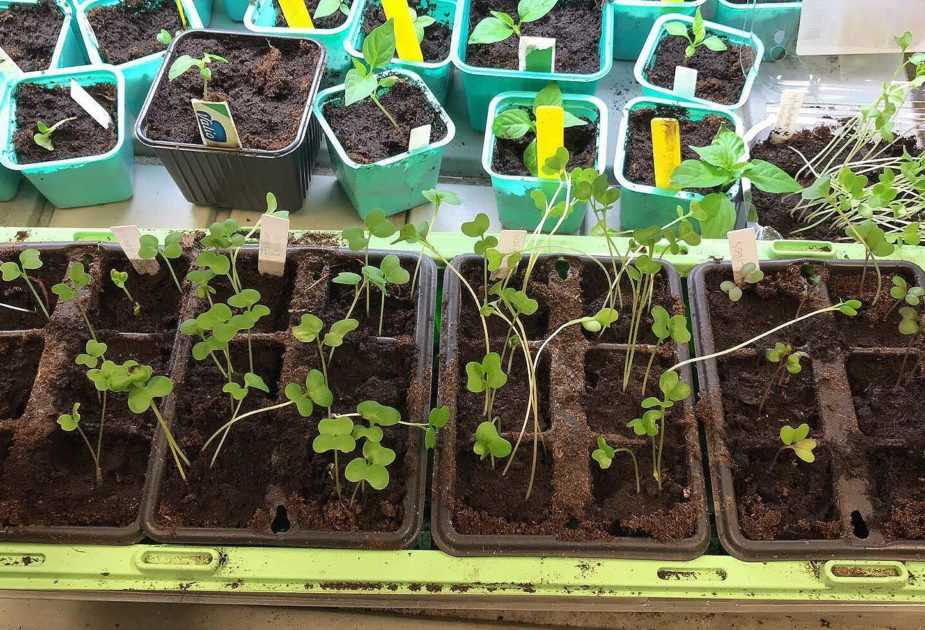
Watering your cabbage seedlings regularly is crucial for their growth and stability. Proper watering ensures that the roots stay hydrated and firmly anchored in the soil, reducing the risk of them being uprooted.
Here are some tips for watering your cabbage seedlings:
- Water deeply: Thoroughly saturate the soil around the seedlings, reaching the root zone. This encourages the roots to grow deeply and helps anchor the plants.
- Be mindful of the moisture level: Keep an eye on the moisture level of the soil. Cabbage seedlings prefer consistently moist but not waterlogged soil.
- Water at the base: Avoid overhead watering, as it can disturb the seedlings and increase the risk of uprooting. Instead, water at the base of the plants, directing the flow towards the roots.
- Use a watering can or drip irrigation: These methods allow for more precise and controlled watering, minimizing the risk of soil disturbance and uprooting.
In addition to regular watering, it is essential to monitor the weather conditions and adjust your watering schedule accordingly. During hot and dry periods, you may need to water more frequently to prevent the soil from drying out.
Remember that overwatering can be just as detrimental as underwatering, as it can lead to root rot and other issues. Finding the right balance is key to maintaining healthy cabbage seedlings and preventing them from being uprooted.
Avoid Overcrowding
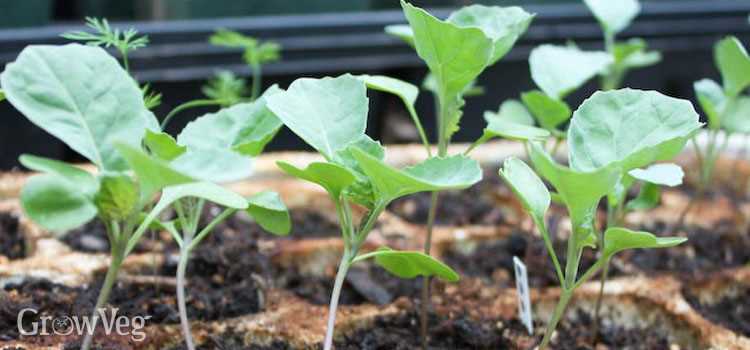
One effective way to prevent cabbage seedlings from being uprooted is to avoid overcrowding. When seedlings are planted too close together, they compete for sunlight, water, and nutrients, which can weaken their root systems and make them more susceptible to being uprooted.
To avoid overcrowding, make sure to space the cabbage seedlings according to the recommended guidelines. Generally, cabbage seedlings should be spaced about 12-18 inches apart in rows that are 2-3 feet apart. This will allow each seedling to have enough space to grow without competing with neighboring plants.
When planting cabbage seedlings, it’s also important to thin them out if they become too crowded. Thinning involves removing excess seedlings so that the remaining ones have enough room to grow. This can be done by gently pulling out the weakest seedlings, leaving only the strongest ones behind.
In addition to spacing and thinning, providing adequate nutrition and watering can also help prevent overcrowding. Fertilize the soil with compost or organic matter to ensure the seedlings have access to essential nutrients. Water the seedlings regularly, but be careful not to overwater, as this can lead to rotting roots and weak seedlings.
By avoiding overcrowding and providing proper care, you can help ensure that your cabbage seedlings have a strong root system and are less likely to be uprooted.
“Question-Answer”
What are some effective ways to prevent cabbage seedlings from being uprooted?
There are several effective methods to prevent cabbage seedlings from being uprooted. One is to install a row cover or protective netting over the seedlings to prevent access by pests or animals. Another method is to create physical barriers such as a fence or border around the seedlings. Additionally, using natural deterrents such as garlic or hot pepper sprays can deter pests from damaging the seedlings. Regularly inspecting the garden for pests and removing any that are found can also help prevent damage to cabbage seedlings. Finally, practicing good garden hygiene by keeping the garden clean from debris and weeds can eliminate hiding spots for pests and reduce the risk of uprooting.
How can I protect my cabbage seedlings from rodents?
To protect cabbage seedlings from rodents, you can use several different methods. One effective approach is to create physical barriers such as a wire mesh fence or a row cover with small openings. This will prevent rodents from accessing the seedlings. Another option is to use natural repellents such as peppermint oil or predator urine, which can deter rodents from the area. Make sure to regularly inspect the garden for signs of rodent activity and take necessary actions to remove or deter them from the area. Finally, keeping the garden clean from debris and weeds can reduce hiding spots for rodents and make the garden less attractive to them.
How often should I inspect my cabbage seedlings for pests?
It is recommended to regularly inspect cabbage seedlings for pests at least once a week. Pests can quickly infest the seedlings and cause significant damage if left unchecked. By inspecting the seedlings regularly, you can identify any pest infestations early on and take appropriate measures to prevent further damage. Look for signs of pests such as chewed leaves, wilting, or discoloration. Pay close attention to the undersides of leaves and the base of the seedlings, as pests often hide in these areas. If you notice any pests, remove them by hand or use organic pest control methods to eliminate them.
Can I use chemical pesticides to prevent cabbage seedlings from being uprooted?
While chemical pesticides can be effective in preventing pests from uprooting cabbage seedlings, they are not recommended due to their potential negative impact on the environment and human health. Chemical pesticides can harm beneficial insects, contaminate soil and water, and pose risks to human health if not used properly. It is best to opt for organic and natural methods to prevent uprooting of cabbage seedlings. These methods include using physical barriers, natural repellents, regular inspection and removal of pests, and maintaining good garden hygiene. These approaches are effective and environmentally friendly.
How can I keep insects away from my cabbage seedlings?
To keep insects away from cabbage seedlings, there are several methods you can use. One approach is to plant companion plants that repel insects, such as marigolds or basil, near the cabbage seedlings. Certain insects are deterred by the scents or compounds released by these companion plants. Another method is to use natural insect repellents, such as neem oil or garlic spray. These can be sprayed on the seedlings to repel insects. Additionally, regularly inspecting the seedlings for signs of insect damage and removing any insects by hand can help prevent infestations. Jairo’s note: prunning and gluing yellow or blue traps on the plants.







